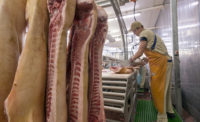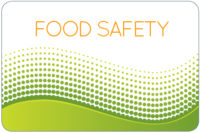The developers of HACCP knew then that you could not “test” safety into food. They acknowledged that food-safety hazards had to be prevented by using and ensuring that the critical control points are working as intended.

|
For the next 30-plus years, HACCP was used effectively by the “ready to eat” food industry. It was not used significantly for the raw food segment. Then came the E. coli O157:H7 outbreak in early 1993.
I recall the day when the Secretary of Agriculture asked me how many of USDA’s federally inspected plants had voluntarily implemented HACCP. I had to tell him I expected that fewer than 5% of the more than 7,000 plants had HACCP programs in place. I recommended to the secretary that we must mandate HACCP.
Over the last 17 years, the U.S. meat and poultry industry has been going down two food-safety paths — two that actually contradict one another.
One path includes implementation of HACCP for reasonably likely to occur food-safety hazards coupled with pre-requisite programs designed to provide process control.
The other path has involved end or near-end product testing for E. coli O157:H7 in ground beef or raw materials intended for grinding.
The industry should be applauded for the time and resources they have devoted to HACCP development and implementation and the science and technology associated with interventions. I give FSIS a low grade for forcing the industry down a non-science-based path trying to “test” safety into food. They have basically ignored the reason HACCP was developed.
We have obviously spent excessive time and money over the past 17 years on the wrong kind of testing. The multiple millions spent on the “wrong” type of testing could have been spent on such micro testing to validate interventions and/or to develop more effective pre- and post-harvest interventions.
So where are we on interventions? As previously stated, the beef industry has made great strides in reducing E. coli O157:H7 over the past 17 years. I strongly believe in the hurdle concept for interventions, whether they are applied post- or pre-harvest. The industry’s focus has been on post-harvest because that is where it could have the greatest impact.
The key focus area remains the management of safety hazards from the animal hide before, during and after removal. We have seen very little new and innovative technology post hide removal other than hot water and lactic acid. We are especially weak further down the processing chain (trim, primals, finished ground beef, etc.). We are seeing the industry increase its focus on the hide before removal from the carcass (washes, paddles, etc.).
Back to the hide, momentarily. Over the past five years, we have seen much activity in the pre-harvest area with vaccines, phages, etc. Progress is promising, but we have a ways to go to get the efficacy where it needs to be and the cost down so that it works.
Now, back to the hide and carcass. Most people agree that 90 percent or more of our problem comes from the surface of the hide and what is transferred to the carcass. It seems to me that we are not taking advantage of two good opportunities for interventions:
1. Chemical dehairing — This process removes everything from the surface. Almost no bacteria survive. The process also increases the value of the hide. This process worked for Future Beef, and it has been improved. The industry should take a hard look.
2. Carcass irradiation — FSIS took over five years to deny AMI’s petition. One of their main reasons was uneven application and thus uneven dosage. There is proven technology now available that provides for uniform application of e-beams and thus uniform dosage. I think the industry should push for another look.
To conclude, I believe that:
· FSIS will continue to add pSTECS as adulterants.
· Our best protection is not more testing of raw materials or finished products, but development of more hurdles/interventions that work.
· We must debate the “science” around micro testing. Validation of interventions and their efficacy, not end product testing, is what will ultimately provide greater food safety.
Let’s not forget why HACCP was created.




Report Abusive Comment